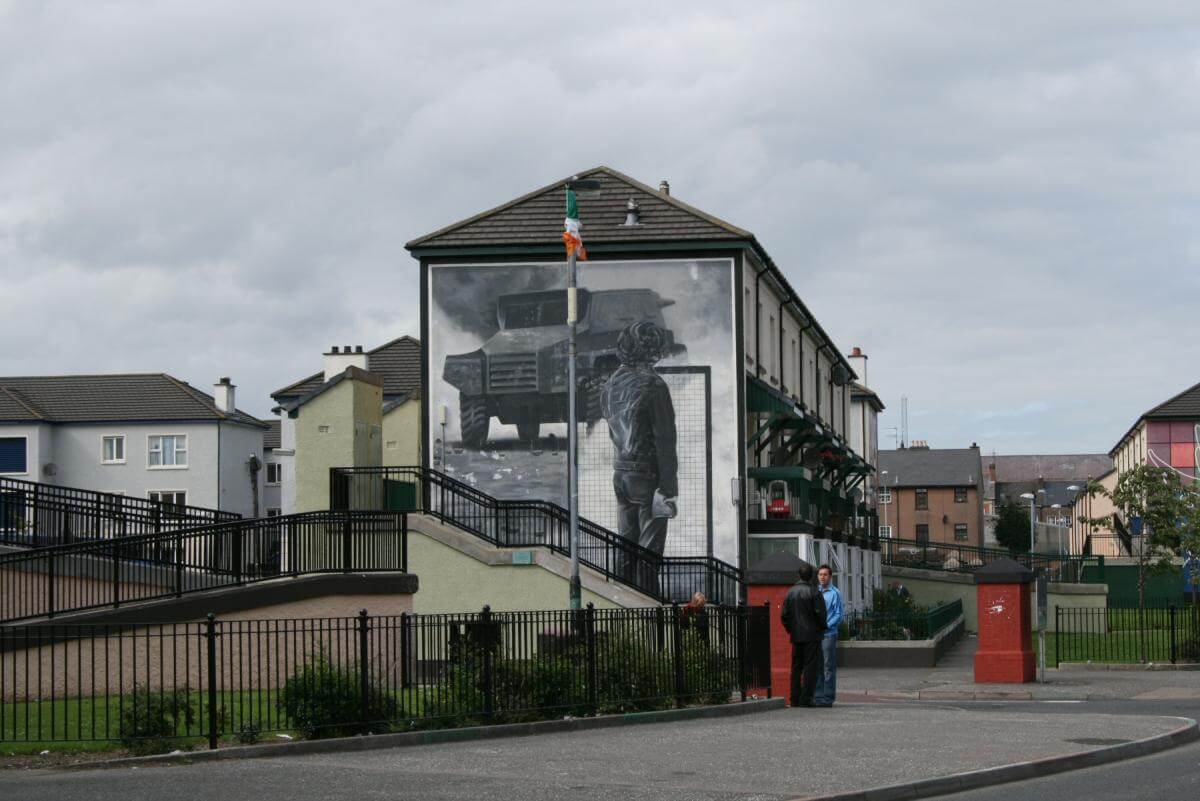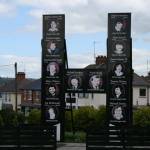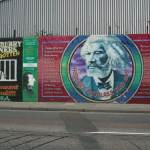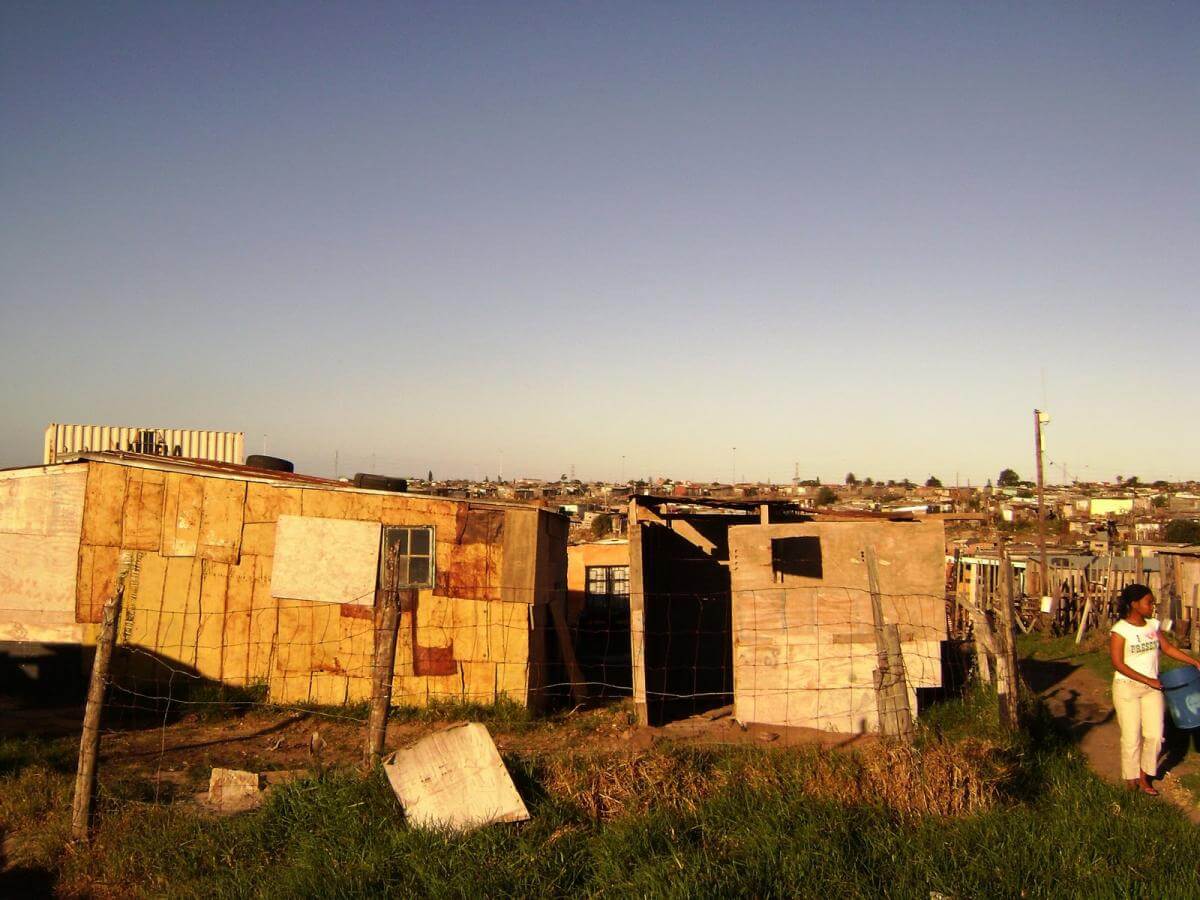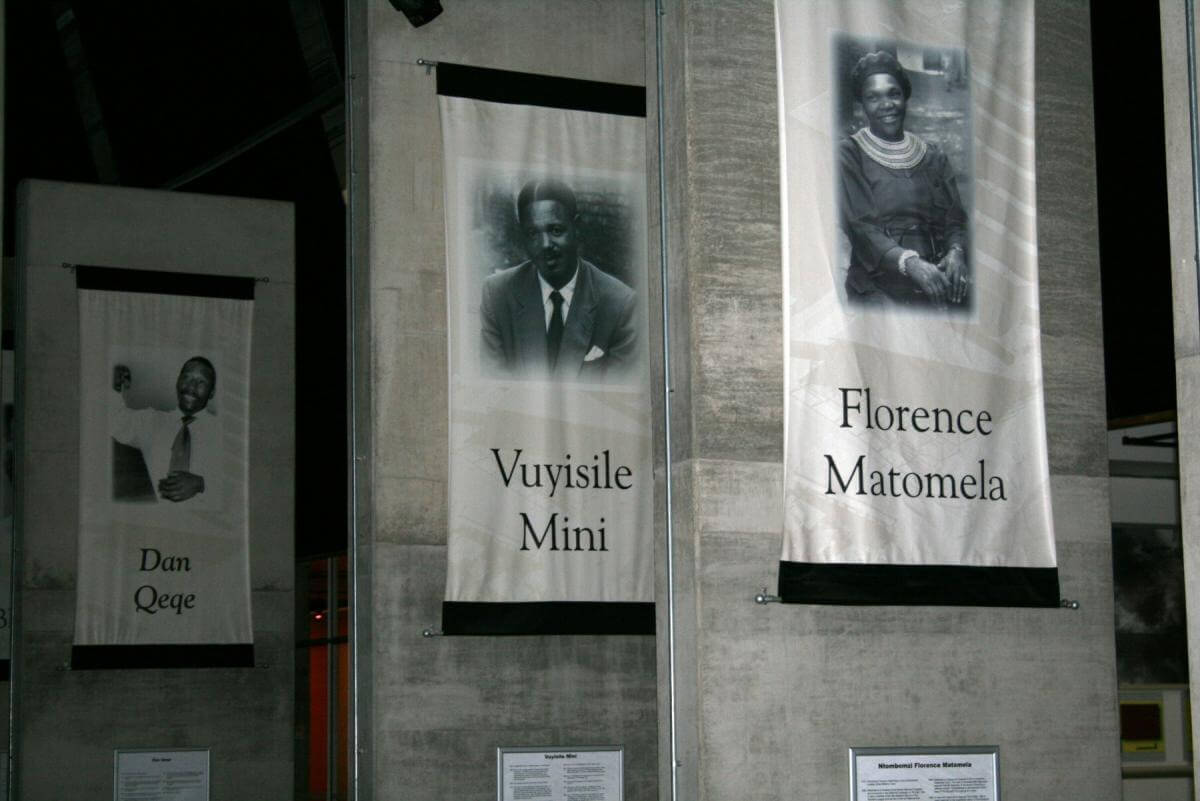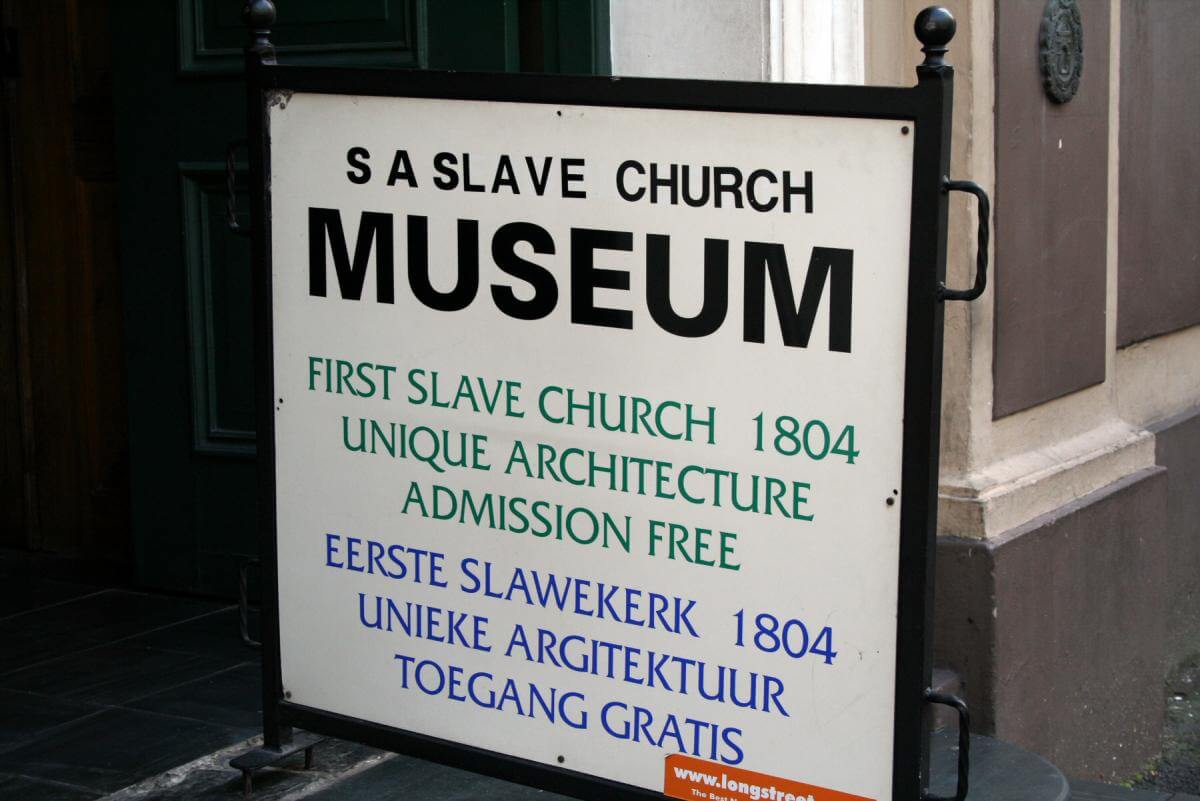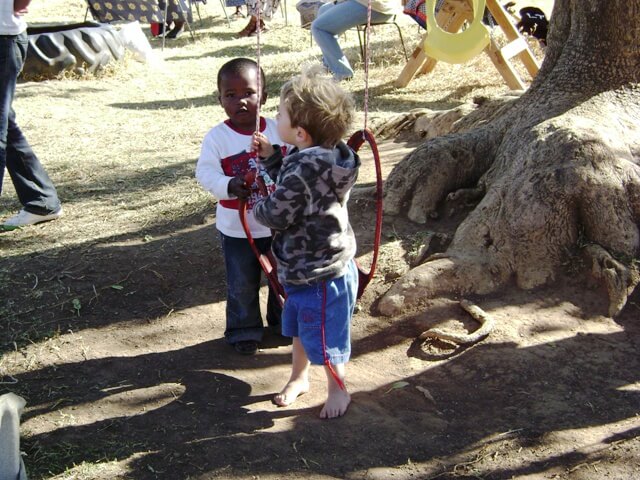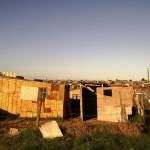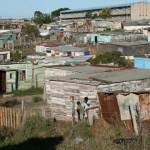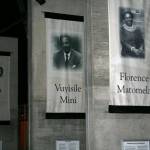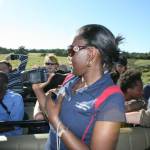Overview
Charles Reagan Wilson considers connections between three sites of racial reconciliation work.
Introduction
During the summer of 2008, I travelled to Northern Ireland and South Africa as part of "Race, Religion, and Reconciliation," a project which brought together three faculty members and eighteen graduate students from the University of Mississippi, the University of Ulster, and Nelson Mandela Metropolitan University. Spatial issues loomed large in these divided societies — the Jim Crow South and South Africa's apartheid enforced racial separation, while Northern Ireland's Protestant-Catholic Troubles divided that country into embattled religious enclaves. Our travelling group studied the politics of memory, economic development, public religion, and gender leadership styles of reconciliation. We hoped the summer's experiences would bring us better understanding of our societies, with an awareness of common and distinctive factors affecting the spatial relations of groups with legacies of conflict and division.
In July we began our discussions with public policy advocates and congressional staffers in Washington. Most of the group's time in the United States was in the South, but beginning our journey in the nation's capital established the larger national context and enabled us to begin on a note of contemporary politics and policy before engaging people who had led social changes and experienced its results. Then it was off to Memphis and the National Civil Rights Museum, where we were surprised by the overwhelming majority of African Americans in attendance; it was Fourth of July Homecoming weekend for Mid-South black families and a visit to the museum has become a tradition. We heard blues on Beale Street and took part in lectures and discussions in Oxford, Mississippi, before visiting with racial reconciliation leaders in Jackson and the Delta.
 |
| Ruth Maron, The group at Ground Zero Blues Club, Clarksdale, Mississippi, 2008. |
One Delta moment suggested the widened horizons made possible by bringing international students together with local people. A few of our students spoke to children at the Tutwiler Community Center, which offers year-round activities for African American kids. Teachers brought out maps and the children tried to locate Northern Ireland and South Africa. Many did not know the name of Nelson Mandela. One of our group, Lucy Ladira, from Uganda, told of her school experiences in her war-torn country and the need to persevere in getting an education.
Northern Ireland
We were in for a dramatic change when we arrived in Belfast for the July 12 Orange Order parades celebrating the 1688 Protestant victory of King William of Orange at the Battle of the Boyne. During "the Troubles", these parades marched aggressively through Catholic neighborhoods, trailing violence and destruction. After the Good Friday Agreement of 1998, the neighborhoods became out of bounds to the parades. Still, the visual celebration of Protestantism, identification with British culture, and denigration of the Republic of Ireland publicly antagonized Catholics. Menacing bonfires included burning of Irish flags and led to fights between Catholics and Protestants. The martial demeanor of the marchers made us uneasy. Continuing bitterness is not far from the surface. One man carried a sign, initials only — KAI. A Northern Ireland student told us that meant "Kill All Irish."
The next day's newspaper told of how paramilitary and Protestant heritage groups that once staged violent parades now work on economic development as the foundation for reconciliation — rising standards of living for all — in Northern Ireland and the Republic of Ireland, highlighting the parades as the "Orangefest."
We found parallels with the US South. The Orange Order marchers reminded us of Civil War reenactors, at best, and, at worst, modern Kluxers, trying to mainstream. Southern whites have celebrated the family, racial, and historical meanings of the Lost Cause, but these Orangemen went back to 1688 with an enthusiasm for symbols and heroes as though the battle of the Boyne happened yesterday. The southern states' pursuit of cultural tourism, whether Civil War or civil rights sites, suggested comparisons with overseas economic development projects utilizing "heritage." Tourism has become a driving part of the global economy, and public presentation of history and culture can create opportunities sometimes in areas with few options. Portraying a simplified or overly upbeat heritage can also potentially distort history in order to engage visitors. The three societies we studied are trying to figure out how to attract financial support around public presentation of their complex histories while remaining truthful to them.
South Africa
Our time in South Africa included trips to poverty-ridden townships in Port Elizabeth, meetings with advocates of a "rainbow nation" multicultural African society, and visits in the homes of isolated, white, cattle and sheep ranchers who shared considerable hospitality and frank conversations. One recurring question, everywhere we went, was how to involve people in reconciliation efforts who perceive they have lost influence from historical change. They may admit change was just, but believe it has affected them negatively. South African ranchers were hard-working and prosperous families who have lost political power in the South African democracy and now fear land appropriation, as happened in Zimbabwe. One rancher told of six generations of family buried on land where he grazes thousands of livestock. Doubtless, his commitment remains strong, but more pressing is the need for a productive black population that is still largely consigned to miserable housing in townships that go back to apartheid. In Northern Ireland, some Protestants see themselves as victims of the settlement that brought their country's government closer to the Republic of Ireland and included a role for Sinn Féin, the political arm of the Irish Republican Army. Meanwhile, in the US South, whites who have perceived the social changes of the 1960s as empowering blacks at their expense have become key to the national conservative movement that governed the nation during much of the last three decades.
Our group found troubling connections among our societies. British colonialism helped shape the traumatic trajectories of these three places, and visits to an Ulster emigration museum and a Slave Lodge museum in Cape Town reminded us of the migrations to the US South from the Irish and African diasporas. In planning their own regime of racial separation, South Africa's architects of apartheid visited Mississippi in 1949. "Bloody Sunday" in the US South evokes violent images of Selma during the 1960s, but in Northern Ireland the same term calls up memories of vicious attacks on Catholics in Derry.
One day, visiting a dreary township in Port Elizabeth, South Africa we stopped to eat an arranged meal in what Mississippians would recognize as a juke joint-café. Billiard tables engaged the locals, and we heard African music that echoed both blues and gospel. We could have been in the Delta — or at my grandmother's in middle Tennessee — as we ate stewed chicken, field peas, and cornmeal bread.
Hearing stories daily of past violence, exploitation, and injustice affected us, as our conversations dwelled on sites of continuing hurt. Giant murals on the sides of two and three story buildings in the Bogside in Derry portrayed scenes of British troops terrorizing the neighborhood, hunger strikers wasting away, and violent protests. We toured a Catholic neighborhood in Belfast, led by an Irish Republican Army member who had been imprisoned and brutalized, and as we walked through the streets of the neighborhood he pointed out landmarks of terror that continued to remind people of the awful past. Belfast remains divided into separate religious areas by the river and a barbed wire "peace line."
Similarly, we visited the Red Location Museum in Port Elizabeth, South Africa, surrounded by the township housing that survives from apartheid, and heard the memories of white activist Janet Cherry. We saw a remarkable documentary about a white South African security officer who testified before the Truth and Reconciliation Commission and also went to the home of a family he had hurt, seeking their forgiveness but being attacked and bloodied by an unforgiving young member of the family. While in Mississippi, we visited the Delta community of Rome, a place that breathed demoralization. We met Rev. Gregory Braggs of the Silver Star Baptist Church, who with his wife ran a community project out of the church. He told of frustration with whites who would not take part in activities he organized (refusing to accept funding for housing), who would preach in his church but not invite him to theirs, and who would lend him money but paternalistically wanted to dictate everything he did. Undeterred, Braggs went about his on-the-ground work.
Wrestling with Legacies of Place
Despite the continuing presence of historical tragedy in our three societies, we met many people along the way who were wrestling, like Braggs, with the legacies of divided pasts while improving lives in their communities. Northern Ireland's John Hume, who won the Nobel Peace Prize for his key role in ending "the Troubles," told us of Northern Ireland's need to "spill sweat not blood." Judge Ronnie Pallay in South Africa told us that "reconciliation is like a bridge you are crossing but can't see the end."
These people counseled us to hear each other's stories and to create new stories for multicultural societies. Is the US South well along the path of desegregating its history? African American history is increasingly prominent in museums, educational institutions, and public rituals, although there is yet no commonly embraceable interracial narrative, one that would also address the acts and consequences of Native American genocide. South Africa envisions itself as a "rainbow nation," and people we met there told historical and cultural narratives of English, German, and Dutch Afrikaner whites, and blacks who are Xhosa, Zulu, Sotha, and other ethnic groups. The public presentation of South Africa's history highlights moments of multicultural interaction, not just the story of apartheid. Buildings, streets, and public spaces that once honored white leaders are being renamed for black Africans; or sometimes names are added to existing names, creating new combinations on the nation's symbolic landscapes. This is similar to the US South's honoring black heroes with monuments, markers, and street signs and to the creation of spaces that draw upon Civil War and freedom struggle narratives.
While de jure segregation in the United States ended in the 1960s and South African apartheid in 1994, Northern Ireland's 1998 peace is fraught with problems. Political interaction remains content/ious. A visit to the Museum of Free Derry revealed an awareness of the Northern Ireland struggle as part of a worldwide freedom movement, as seen in its membership in the International Coalition of Sites of Conscience. Eamon McCann, a former civil rights activist and still a labor organizer, said "the museum tells the story of the Northern Irish Troubles from the perspective of the people in the community and in the context of the wider world." Northern Ireland activists adapted strategies and styles from the US civil rights movement. An old museum photograph showed McCann with the Irish equivalent of an Afro hairdo. McCann insists on the need to tell the story of the Catholic Bogside in Derry and its role in liberating Northern Ireland from its past. Noting that "long memories without reconciliation can slow down the peace process" he suggests a new common story for Derry, which has, at least twice, been on the side of human progress. In the 1660s, the Protestant Apprentice Boys of Derry defended the city against the monarch's claim to divine right. More recently, the Free Derry civil rights movement represented a modern freedom struggle.
On our trip, we came across many models of reconciliation. Faith-based Mission Mississippi brings people together for social activities that build trust around shared religious values. Northern Ireland has created political and cultural institutions in which Protestants and Catholics work for shared cultural and economic goals. Affirmative action programs require increased Catholic employment as police.
South Africa's Truth and Reconciliation Commission is the most well known model of reconciliation, stressing perpetrators' confessions of crimes, the possibility of forgiveness and amnesty, the recognition that there were victims to be honored, and the potential for material restitution. The Commission emphasized not retributive justice and perpetrator punishment, but restorative justice. South African critics of the Truth and Reconciliation Commission believe it didn't go far enough in giving voice to the thousands of victims of apartheid and in developing effective reparation policies.
The United States has not attempted a truth and reconciliation commission, although a Greensboro, North Carolina, citizens, group sponsored the nation's first commission around investigation of the deaths in 1979 of members of the Communist Workers Party during a public demonstration. My colleagues at the University of Mississippi's William Winter Institute of Racial Reconciliation sponsored a Truth Project to determine interest in a Mississippi Truth and Reconciliation Commission, and in January of 2009 the Institute released a "Declaration of Intent" to establish a commission.
The emotional ending of our group's immersion in sites of social division and attempts at reconciliation occurred amid much emotion at the Cape Town Airport as we headed home. South African Dennis Swarz told us to nurture those "ordinary moments when extraordinary things can happen," including sporting events and cultural activities that bring people together. Efforts at reconciliation take place in particular locales, with particular issues of past division as spurs to conversations and actions. We had learned from efforts to end Jim Crow segregation, South African apartheid, and Protestant oppression of Northern Ireland's Catholics of the importance of moral clarity in reconciliation, the mobilization of media attention to social injustice, and the taking advantage of those rare moments of political will for change. 
About the Author
Charles Reagan Wilson is Kelly Gene Cook, Sr. Chair of History and Professor of Southern Studies at the University of Mississippi, where he has taught since 1981. He is the coeditor of the Encyclopedia of Southern Culture and author of Judgment and Grace in Dixie: Southern Faiths from Faulkner to Elvis (1995) and Baptized in Blood: The Religion of the Lost Cause, 1865-1920 (1980). He also acts as general editor of a new book series, "New Directions in Southern Studies", published by the University of North Carolina Press and as a member of the Southern Spaces Editorial Board.
Recommended Resources
Brundage, W. Fitzhugh. The Southern Past: A Clash of Race and Memory. Cambridge, Mass.: Belknap Press of Harvard University Press, 2005.
Fredrickson, George M. White Supremacy: A Comparative Study in American and South African History. New York: Oxford University Press, 1981.
Joyner, Charles. "The Narrowing Gyre: Henry Glassie, Irish Folk Culture, and the American South," in Joyner, Shared Traditions: Southern History and Folk History. Urbana: University of Illinois Press, 1999.
Marsh, Charles. The Beloved Community: How Faith Shapes Social Justice from the Civil Rights Movement to Today. New York: Basic Books, 2005.
Walters, Ronald W. The Price of Racial Reconciliation. Ann Arbor: University of Michigan Press, 2008.
Yamamoto, Eric K. Interracial Healing: Conflict and Reconciliation in Post-Civil-Rights America. New York: New York University Press, 2000.


